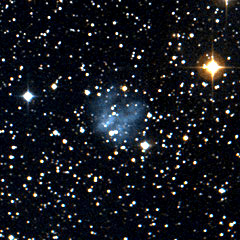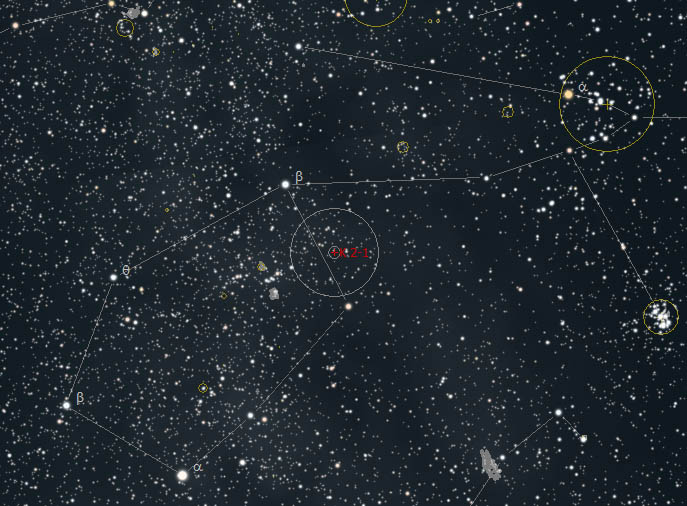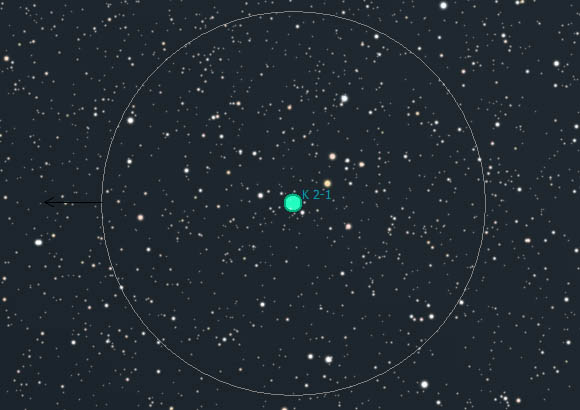 This
object is both a challenge and an enigma. A 12.6 magnitude
irregular galaxy (PGC 16765 = UCGA 100) is listed at this same
position, and it appears to have been included as a galaxy in
research papers as recently as 1997. It has also been
variously classified as a planetary nebula, HII region, and
reflection nebula. That just about covers it! Even today
the SIMBAD database lists it as a reflection nebula, while the NED
database lists it as a planetary. This
object is both a challenge and an enigma. A 12.6 magnitude
irregular galaxy (PGC 16765 = UCGA 100) is listed at this same
position, and it appears to have been included as a galaxy in
research papers as recently as 1997. It has also been
variously classified as a planetary nebula, HII region, and
reflection nebula. That just about covers it! Even today
the SIMBAD database lists it as a reflection nebula, while the NED
database lists it as a planetary.
In photographs it looks
like an irregular, yet diffuse, broken ring, not unlike a fat
horseshoe. The OIII filter really brings it out, so it seems
apparent that it isn't a galaxy. Galaxies aren't enhanced by
this filter and neither are Reflection Nebulae.
Observing this object
will probably require at least a 8-inch scope and an OIII filter.
Jean Paradis Longueuil
reports that it was easily seen under perfect sky conditions in a 12.5-inch.
Don't use too much magnification on this one. I recommend
starting with your lowest power eyepiece. It was too large for
my 12.5mm Super Plossl (166x) in my 18-inch f/4.5. It was
invisible in that eyepiece even with the filter. Yet, at 94x
it was readily apparent (although by no means bright). I noted
that it appeared as a "nice round haze with brighter outer edges on
opposing sides."
 K 2-1 is between Beta and Iota Aur. The larger
circle is a 6x30 magnifying finder with an FOV of 5o.
The smaller circle is the eyepiece view circle drawn below. Up
and down are inverted to match a finder with a diagonal.
K 2-1 is between Beta and Iota Aur. The larger
circle is a 6x30 magnifying finder with an FOV of 5o.
The smaller circle is the eyepiece view circle drawn below. Up
and down are inverted to match a finder with a diagonal.

The field in an 18-inch at
94x. North is down and east is to the right.
|